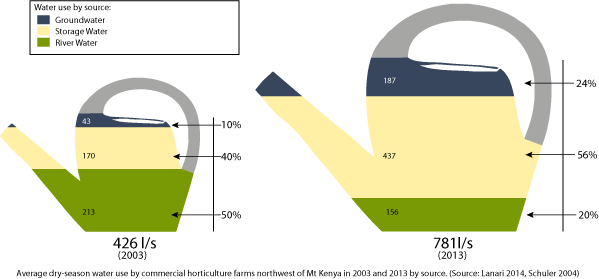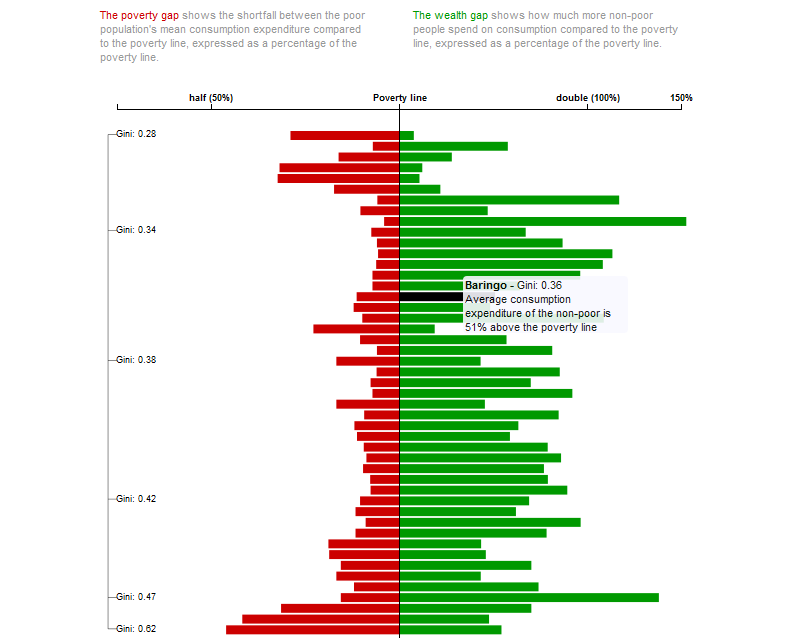Where our roses come from – commercial horticulture in Kenya
Growing flowers and vegetables for export is a vital source of revenue for Kenya and other East African countries. It provides jobs for local people, including women, and creates market channels for small-scale farmers to sell their crops. But working conditions and employment terms must be improved. Moreover, the industry is a major water consumer, competing for declining river water with other uses. This is a problem during the dry season, which corresponds with Europe’s winter. Near Mt Kenya, the sector is shifting from using river water to relying more on stored water and boreholes.

Like other countries in East Africa, Kenya faces seasonal water shortages that make it important to use and distribute water in an optimal way. One of Kenya’s biggest water users is its growing commercial horticulture sector, which exports fruits, vegetables, and especially flowers to Europe and elsewhere. Since 2003, water usage for commercial horticulture has almost doubled in CDE’s study area, accompanied by a shift from using river water to using more stored water (+16% points) and groundwater (+14% points). In sum, although the sector’s overall water use during the dry season has increased, its dependence on river water – both as a share and in absolute terms – has fallen in favour of storage water and groundwater.
Use of captured and stored rainwater and floodwater for irrigation should be continued and expanded. But increasing commercial use of groundwater is risky – it may constitute an unsustainable shift from one fragile natural water source to another.
Economically, the horticulture sector is a big success: it is Kenya’s second largest foreign exchange earner and a major employer. In 2014, for example, the sector contributed EUR 1.7 billion to the economy, with 42% of the profits coming from exports. Neighbouring countries in East Africa have sought to emulate this model. But its economic benefits must be weighted carefully against the relevant environmental and social risks, including competition over precious water and pesticide-related dangers to worker health.
The interactive graph below shows Kenya’s trade partners and volumes for cut flowers, plants, etc. The data are based on The United Nations Commodity Trade Statistics Database (UN Comtrade), and the graphical representation was made by the Department for Business Innovation and Skills (UK). Kenya’s exports of cut flowers, plants etc. increased from USD 100 million in 2000 to USD 500 million in 2013 with the Netherlands buying more than half of these exports.
Read our newest policy brief “Commercial Horticulture in Kenya: Adapting to Water Scarcity” and learn how to address key sectoral-risks by improving horticultural labourer’s working conditions, strengthening grassroots-level Water Resource User Associations, and efficiently using water.
Read the Policy Brief online:Lanari N, Liniger HP, Kiteme BP. 2016. Commercial Horticulture in Kenya: Adapting to Water Scarcity. CDE Policy Brief, No. 8. Bern, Switzerland:CDE.
Suggested further readings:
- Lanari N. 2014. Development of the Commercial Horticulture Sector Northwest of Mt. Kenya from 2003 to 2013 and its Impact on River Water Resources of the Upper Ewaso Ng’iro Basin [master’s thesis]. Bern, Switzerland: University of Bern.
- Mekdaschi Studer R, Liniger HP. 2013. Water Harvesting: Guidelines to Good Practice. Centre for Development and Environment (CDE), Bern; Rainwater Harvesting Imple-mentation Network (RAIN), Amsterdam; MetaMeta, Wageningen; The International Fund for Agricultural Development (IFAD), Rome. https://www.wocat.net/en/knowledge-base/documentation-analysis/recent-publications.html





